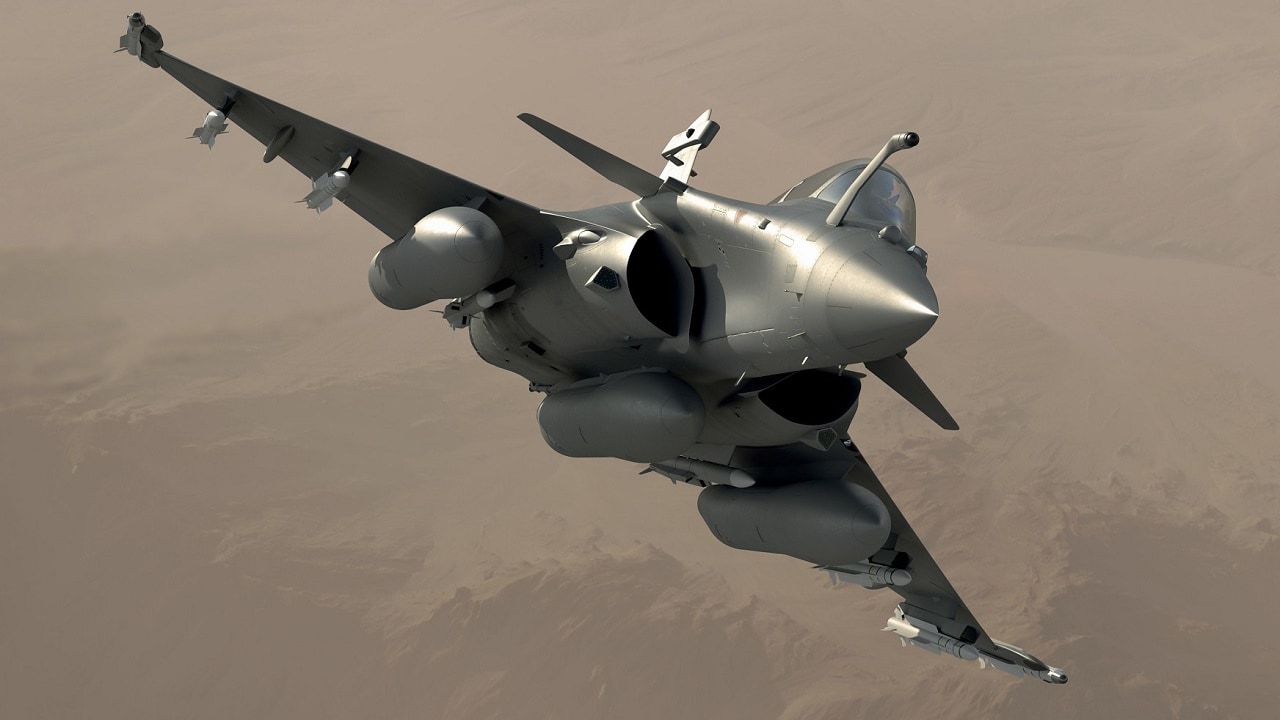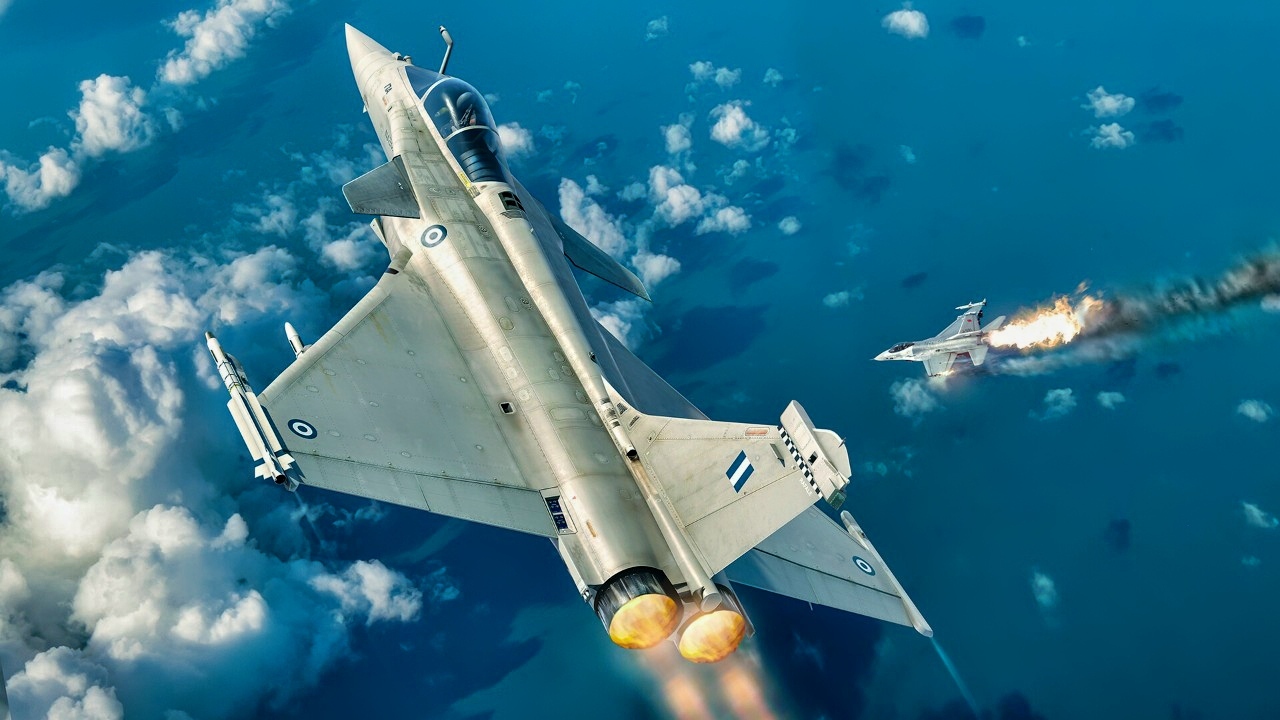Key Points: India’s Air Force lost at least one advanced Dassault Rafale fighter in an aerial clash with Pakistan’s Chinese-built J-10C jets, raising alarms about India’s air power strategy.
-Despite investing $9 billion for just 36 Rafales, the aircraft was shot down inside Indian airspace, sparking concerns over radar and stealth effectiveness.

Dassault Rafale Fighter. Image Credit: Creative Commons.
-Critics argue the high-cost Rafale lacks modern fifth-generation capabilities, such as stealth offered by alternatives like America’s F-35.
Experts, however, highlight that decades of bureaucratic delays and insufficient procurement—not the Rafale itself—are weakening India’s aerial defense.
-The incident underlines India’s urgent need for comprehensive air force modernization to maintain regional security.
J-10C vs. Dassault Rafale
When the Indian Air Force (IAF) acquired 36 French-made Dassault Rafale fighter aircraft in 2016, it was considered a major step in making the Indian military’s air arm into a modern-day force. Prior to this acquisition, the IAF had been operating a mix of Russian-made fighters that included a smaller number of Dassault Mirage 2000 aircraft (the predecessor model to the Rafale) and an even older fleet of Jaguar fighters—an Anglo-French collaborative project designed in the 1960s.
However, on Wednesday, 7 May, at least one of the Rafales was lost in a series of engagements with the Pakistan Air Force (PAF). The action, named Operation Sindoor by the IAF, was a response to an incident two weeks ago in the Indian province of Kashmir in which New Delhi blamed Pakistan for a terror attack that killed 26 persons, mostly tourists.
Details are still sketchy at best. Two or three IAF aircraft were shot down well inside of Indian airspace, according to reports from officials in New Delhi, Western diplomats, and local media outlets. Pakistan claims it brought down five air vehicles, reported as having been at least one Heron drone, three Dassault Rafale fighter jets, one MIG-29 fighter aircraft, and one Su-30MKI two-seat fighter interceptor.
Nothing has yet been confirmed, but the best reports at this stage are that the three aircraft lost by India were actually Mirage 2000, one MiG-29, and just one Rafale—not the three kills claimed by the IAF.
The IAF: A Weak Force or a Victim of Diversification?
The complete set of details about the shootdown is also unknown. Still, sources from New Delhi defense specialists speaking to 19FortyFive are hesitant to admit that the Rafale and the other aircraft lost seem to have been taken out by a Chinese-made Chengdu J-10C aircraft operated by the PAF.
This platform, as well as the long-range Leihua PL-15, active-radar homing air-to-air missile, are both considered inferior to the French fighter and its complement of weapons.

Dassault Rafale. Image Credit: Industry Handout.
More alarming is the fact that the IAF aircraft appear to have been engaged and destroyed while still well inside Indian airspace. This would suggest that the Chinese fighter’s radar set has not only the range to take out targets like the Rafale at long distances but that the measures taken by its designers and the aircraft’s high-technology electronic warfare system to reduce the radar cross-section of the Rafale were ineffective.
In the wake of the incident, some have claimed that the Rafale shootdown demonstrates that the IAF has become a much weaker force than it once was. The opportunity cost of the Rafale acquisition, a total of US $9 billion for just 36 aircraft, has even been blamed by some for the state of India’s air power.
The other culprit that has been singled out is that the Rafale is “only a 4th-generation fighter” and does not offer enough combat capability today. The timing of the event is also awkward for the Indian Defence Ministry. Only in late April had New Delhi decided to purchase another 26 of the French fighters in a $7 billion procurement. This variant is the carrier-capable Rafale M that will be delivered to the Indian Navy.
The same critics also highlight that the unit price of $288 million per copy makes them more expensive than 5th-generation stealthy options on the market, like the carrier-capable US-made F-35C. The implication is that the Rafale is both too old in design and overpriced.
Dassault Rafale: Problems? Well, Not Exactly
But those who want to blame the Rafale’s performance for being somehow inferior to other platforms ignore the fact that the acquisition of the aircraft has been the exception rather than the rule of how the IAF has been administered for years.
Five years ago, two of India’s most well-thought-of air power analysts wrote that acquiring the Rafales was the proverbial “drop in the bucket” in meeting the nation’s air power requirements.
“The Indian Air Force has long needed refurbishing, but it has been perennially delayed both by New Delhi’s infamous bureaucratic red tape and by budgetary issues,” they wrote in 2020 for an article in Foreign Policy. “Now, the arrival of the new fighters—the first in over 20 years—in the middle of an unprecedented border face-off against China will be a boost for Indian military capability as well as morale. But it won’t do much to change the hard reality that, as an air power, India is falling far behind.”
Air forces are largely only as strong as their weakest link, said a former NATO nation senior pilot and air force officer. “The IAF’s problem is not that the Rafale is somehow ‘old’ or ‘outmoded.’ The problem is that there are not enough of them in comparison with the size of the IAF in total. They are a perfect example of that saying, ‘If they were sent to fight, there are not enough of them, and if they were sent to die, there are too many.’”
About the Author: Reuben F. Johnson
Reuben F. Johnson is a survivor of the February 2022 Russian invasion of Ukraine and is an Expert on Foreign Military Affairs with the Fundacja im. Kazimierza Pułaskiego in Warsaw. He has been a consultant to the Pentagon, several NATO governments and the Australian government in the fields of defense technology and weapon systems design. Over the past 30 years he has resided in and reported from Russia, Ukraine, Poland, Brazil, the People’s Republic of China and Australia.

